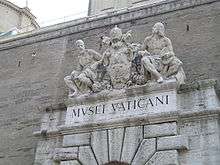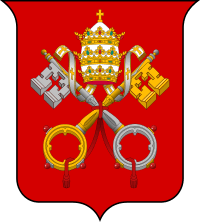Languages of Vatican City
Vatican City uses Italian in its official documents and as its main working language. However, many other languages are also used by institutions situated within the state, such as the Holy See and the Swiss Guard, as well as personally by its diverse population.

History
During the Roman Empire, Latin was the main language spoken in the area corresponding to the present Vatican City. The subsequent Papal States also used Latin for official purposes during the first centuries of their existence, but various Italian languages were spoken, such as Emilian-Romagnol and standard Italian (based on Tuscan). In 1870 the area became part of the Kingdom of Italy, whose official language was Italian.
In 1929 the Lateran Treaty established Vatican City as an independent state. The Fundamental Law of Vatican City State does not establish an official language, but its laws are published in Italian in a supplement to the Acta Apostolicae Sedis (official gazette of the Holy See), which is mainly in Latin.
Since the state came into existence only in 1929, most of the buildings situated within it predated it by centuries. Inscriptions can be found in them mainly in Latin, but also in Italian, Greek, French and German.[1]
Present languages
Many languages are spoken within the state, as its inhabitants come from many countries. Italian is the everyday language used by most workers. The Holy See, the entity with authority over the state (yet legally distinct), uses Latin as its official language, Italian as its main working language, and French as its main diplomatic language. In the Swiss Guard, Swiss German is the language used for giving commands, but the individual guards take their oath of loyalty in their own languages: German, French, Italian or Romansh.
Since the state was established, native languages of the popes have been Italian, German, Polish and Spanish.
Websites
The official website of Vatican City is primarily in Italian,[2] with a partial version in English.[3] Previous versions of the website were also available in French, German and Spanish.[4]
The official website of the Holy See is primarily in Italian, with versions in English, French, German, Portuguese and Spanish, and partial versions in Arabic, Chinese and Latin.[5] Some content is also available in many other languages, such as Albanian, Belarusian, Croatian, Czech, Dutch, Hebrew, Hungarian, Indonesian, Japanese, Korean, Lithuanian, Maltese, Polish, Russian, Slovak, Slovene, Swahili and Ukrainian.[6][7]
The Holy See's newspaper L'Osservatore Romano is published in Italian, English, French, German, Polish, Portuguese and Spanish.[8] The Vatican News website is available in many languages: Albanian, Amharic, Arabic, Armenian, Belarusian, Bulgarian, Chinese, Croatian, Czech, English, French, German, Italian, Japanese, Korean, Latvian, Lithuanian, Hindi, Hungarian, Malayalam, Macedonian, Polish, Portuguese, Romanian, Russian, Slovak, Slovene, Spanish, Swahili, Swedish, Tamil, Tigrinya, Ukrainian and Vietnamese.[9]
References
- Camposanto Teutonico
- Vatican City State (in Italian)
- Vatican City State
- "Vatican City State" (in Italian). Archived from the original on 2013-02-14.
- The Holy See (in Italian)
- Apostolic exhortations, Holy See.
- Messages World Youth Day, Holy See.
- L'Osservatore Romano
- Vatican News
